Thousands of years ago, the American horse population was thriving. Native Americans reared them for hunting and companionship. But many of these local breeds died out. Around the 15th Century, conquistadors introduced new breeds that eventually caught on.
Later, other breeds came with English settlers and explorers. These included racehorses and show horses. Today, the progeny of these equine stock make up the bulk of horse breeds in the USA. So let’s check out some of the most recognizable horse breeds in modern America.
1. Mustang
These feral horses are the best-known horse breed in the USA. Their ancestors were domestic horses that escaped, were freed, or were abandoned in failed settlements. Mustangs are divided into several sub-breeds that include Appaloosa, Spanish, Kigers, and Abstangs.
2. American Quarter Horse
Versatile American Quarter horses are often a mix of four breeds. This might include:
- Spanish + Arabian + English + Mustang OR
- Arabian + Native American (e.g. Chickasaw) + Mustangs + Thoroughbred
They’re the most popular horse breed in the USA and got their name because when it comes to quarter-mile races, they’re faster than other breeds. They’re prized sprinters, up to 44mph.
3. Appaloosa
Appaloosas are spotted horses. Their whole body might have speckles like a leopard or Dalmatian. But their coat might also alternate spatters with solids. Many mustang herds have Appaloosa blood in them. The breed was developed by the Nez Perce Native Americans.
4. American Shetland Pony
Shetland ponies originally came from the north of Scotland in a place called Shetland Isles. They’re miniature horses – 42 inches or shorter – but the American variants don’t have that woolly look. They came stateside as pit ponies in the coal mines and stayed after pits closed.
5. Tennessee Walking Horse
This is one of the most controversial horse breeds in the USA. They were genetically selected for their distinct high-kneed gait and are a popular show horses. But some activists believe forcing horses to walk that way is cruel. It might be why there’s a lot of TWN in mustangs.
6. Morgan Horse
Morgan horses came in various colors but they often have a convex profile, a wide forehead, prominent eyes, and a compact body. Their tail is high but not as high as Arabians. Known as one of the earliest horse breeds in the USA, they have short backs and arched necks.
7. American Cream Draft Horse
Draft horses have powerful, stocky bodies that let them pull heavy carts and horses. And the calm American Cream Draft has a distinct skin tone, tail, and mane described as cream, off-white, blonde, pale, or gold champagne. It’s a rare breed that was first developed in Iowa.
8. Florida Cracker Horse
You’ve heard all the meme-able escapades of Florida Man, but now let’s talk about the Florida Horse. This horse breed in the USA is sometimes known as a Chickasaw, Seminole, Prairie, Florida cow pony, or as a grass-gut. These gaited horses do equally well at work or in shows.
9. American Paint Horse
These horses combine thoroughbred, quarter horse, and pinto genes to create a pretty horse whose coat looks like a toddler painted it. Their patterns vary and they form the second-largest horse breed in the USA after quarter horses. They’re stocky horses bred for working.
10. Thoroughbred
Most racehorses are thoroughbreds. Their defining features are spirit, endurance, and speed, though they also have trainable temperaments because jockeys have to push them harder than they can go. These hot-blooded horses were initially imported before getting local studs.
11. Standardbred
While thoroughbreds are big in the race circuit, standardbreds are desired for their harness racing skills. They’re curated from trotters and pacers including Morgans, Norfolk Trotters, and Narragansett Pacers. They have longer bodies and better muscle tone than racehorses.
12. Colorado Ranger
These horses look similar to solid-block Appaloosas. The difference is Colorado Rangers can trace their ancestry to two Turkish stallions (Patches and Max) in the Colorado High Plains. This breed has a gentle nature with a short back and sloping shoulders. They’re fun to ride.
13. Tiger Horse
Visually, this horse is the opposite of a Colorado Ranger (solid body, spotted rump) because it has a solid head and a spotted body. They can be classified as heavenly tigers or royalty tigers. They’re especially good at the Indian Shuffle, a type of lateral gliding gait like cats or camels.
14. Mountain Pleasure Horse
Mountain Pleasure horses are among the gentlest horse breeds in the USA. Their ancestry includes genes from Rocky Mountain, American Saddlebred, and Tennesee Walking horses. They can amble over steep terrain and are great with kids so they make good family horses.
15. Nez Perce Horse
The Nez Perce are a Native American tribe based in Idaho. Their community horse breed is sometimes mistaken for a pinto, Appaloosa, or Colorado Ranger because of its coloring. But its targeted genetic make-up comes from breeding Appaloosas with Akhal-Tekes from Asia.
16. POA (Pony of the Americas)
No, you can’t refer to this breed as an American Pony. And yes, it’s bigger than a typical pony. POAs are a distinct cross of Appaloosas, Arabians, and Shetland ponies. Their spotted pattern has to be visible from 40 feet away. This is sometimes defined as ‘loud Appaloosa’.
17. American Saddlebred
These high-tailed horses were once known as Kentucky Saddlers, these horses are sometimes called ‘the Horse America Made’. Their DNA includes the now-extinct Narragansett Pacers (the first-ever horse breed in the USA) plus Canadian Pacers, thoroughbreds, and Morgans.
18. Missouri Fox Trotter
These Ozark horses are tough enough to be stock horses but graceful enough for show work. They’re skilled at the foxtrot and are largely solids or pintos with leg markings. The horse has a smooth gait and remarkable stamina. Their formal breed registry only began in 2004.
19. Curly Horse
Curlies are sometimes called American Bashkir horses. They’re calm, clever, friendly, and seem to enjoy human company more than other horse breeds in the USA. They’re trainable, hardy, and their coat’s curl pattern is most distinct in colder months. They’re hypoallergenic.
20. Andalusian Horse
We know that most horse breeds in the USA were developed from the remnants of Spanish conquistador herds. Andalusians are the originals, sometimes called Pure Spanish horses. These docile horses come from Iberia and have elegant bodies with a thick mane and tail.
21. Rocky Mountain Horse
Don’t let the name fool you – this mountain trail horse breed hails from the Appalachians in Kentucky. Their first sire was Old Tobe, and this breed has a distinct black or chocolate brown coat with a blonde or flaxen tail and mane. Their bodies are sometimes dappled silver.
22. Racking Horse
This breed has a practiced singlefoot amble that was prized on the plantations where it was developed. It was carved out of Tennessee Walking Horse stock, aiming for more endurance and a gentler nature. Racking horses were formally accepted as a distinct breed in 1971.
23. Spotted Saddle Horse
In competitive breeding, horses with solid colors are often valued more than speckled ones. But the Spotted Saddle horse was genetically designed to combine pretty spotted patterns with poise and elegance. Root breeds include ambling pintos, Tennessee Walking horses.
24. Carolina Marsh Tacky
These South Carolina natives are quite rare. They’re often roan-colored and do well in swamps. Their great-grand-horses were Colonial Spanish and their current genetic cousins are Florida Crackers and Bankers. They’re rarely taller than 14hh and have ewe necks.
25. Quarab
Quarabs are bred by mixing Arabian, Quarter, and Paint horses. They can turn out straight (mostly Arabian), stock (mostly Quarter), or pleasure (mostly Paint). Their tails stay low but their necks and bodies are elongated while their barrels are enhanced. They don’t have spots.
26. American Warm-Blood
Cold-blood horses are stocky for work while hot-blood horses are sleek for racing. Warm-bloods are purposely bred to have versatile features that fall in between. They’re mostly used for showjumping and dressage but they’re good at driving cattle too. They can grow to 17hh.
27. National Show Horse
Initially, this horse combined Arabians with American Saddlebreds, but they’re now seen as a standalone horse breed in the USA. Their genes result in small heads, swan necks, and an upright stance. They have a noble appearance and are sought after for competitive events.
28. American Walking Pony
This 1968 breed was Georgia’s answer to the dominance of the Tennessee Walking Horse. Its genes merged TWNs with Welsh Ponies. The goal was a smaller horse with a smooth ambling gait. They’re good at the Pleasure Walk and the Merry Gait, especially young or slim riders.
29. Welara
A cross between Arabians and Welsh Ponies, these horses can be anything from 11hh to 15hh. Their US registry was set up in 1981 and is divided into four classes with Welsh-leanings As being the smallest and gentlest whiles Arabian-heavy Ds are larger, tougher, and spirited.
30. Nokota Horses
As their name suggests, Nokotas are mustangs native to the badlands of North Dakota. This mix of Native American, thoroughbred, and Spanish horses nearly went extinct. They have angular bodies and their most common color is blue roan, often with a white blaze marking.
31. Camarillo White
They aren’t that many white knights in today’s world, but Camarillos would probably be their steed of choice. They’re bred specifically for their gleaming coat and pink undertone, but this breed is also known for large eyes and strong limbs. They’re born white and stay that way.
32. Virginia Highlander
We’ve seen that some trainers use soring to torture horses into their characteristic ambling. But Virginia Highlanders are bred for their natural gait and slight frame. They’re rarely more than 13 of 14hh but their singlefoot gait is built-in. They’ve been registered since the 1990s.
33. Blazer Horse
Not all breeders are driven by speed and profit. Some just want a calm, quiet, strong horse that helps around the farm. Blazers are sought for that exact reason. Developed by Neil Hinck, their powerful build, high endurance, and gentle demeanor are perfect for ranching.
34. Morab Horse
Morab horses were bred by crossing Arabians with Morgans, and they were good for drawing carriages and caravans back in the 1880s. They were light horses that could do a few other tasks around the farm. Many of today’s specimens are classified as Morgans in the registry.
35. Arabian Horse
We’ve looked at several hybrids that include Arabians, but they do exist as a separate horse breed in the USA. You can identify their high ponytails, wedge-shaped heads, and slim muzzles even while you’re far away. They’re commonly used in long-distance horse races.
36. Clydesdales
While Clydesdales are a common horse breed in the USA, there are at least eight known as the Budweiser Clydesdales. You’ll often see them in commercials and promotional shows. Clydesdales are stocky horses with arched necks, broad backs, and feathering in their feet.
37. Canadian Horse
No, they’re not just kinder, more polite mounts. Canadian horses are a distinct breed from Canada that has strayed into the North-Eastern US. They almost went extinct because they were so popular in the cavalry. The breed is sub-divided into trotting, pacing, and light draft.
38. Chincoteague Pony
These horses are tricky because they’re not a distinct breed, but because they only live on the islands of Chincoteague and Assateague, they have genetic similarities among their herds that don’t exist elsewhere. Their mobs are feral so they’re technically classed as mustangs.
39. Kiger Horse
We started this list with a general group of mustangs, but the Kiger is easy to distinguish so it’s sometimes listed as a separate horse breed in the USA. Kigers are often dun or roan. They mostly live in Oregon and have zebra-looking stripes on their legs, sometimes their bodies.
40. Friesian Cross
Friesian Cross horses are a beloved horse breed in the USA but their proportions aren’t as carefully defined. Lots of different mixes end up in this category. But they retain the gentle nature, flashy moves, feathering, and long manes of the Dutch breed that birthed them.
41. Belgian Horse
If you have a draft horse in the USA, it’s probably Belgian. They were imported en masse in WW2 and soon outnumbered other draft breeds, pun intended. American Belgians are often chestnut with blonde manes. They first lived in Brabant, Belgium, and are still sold for meat.
What are your favorite horse breeds in the USA? Share photos with us in the comments!
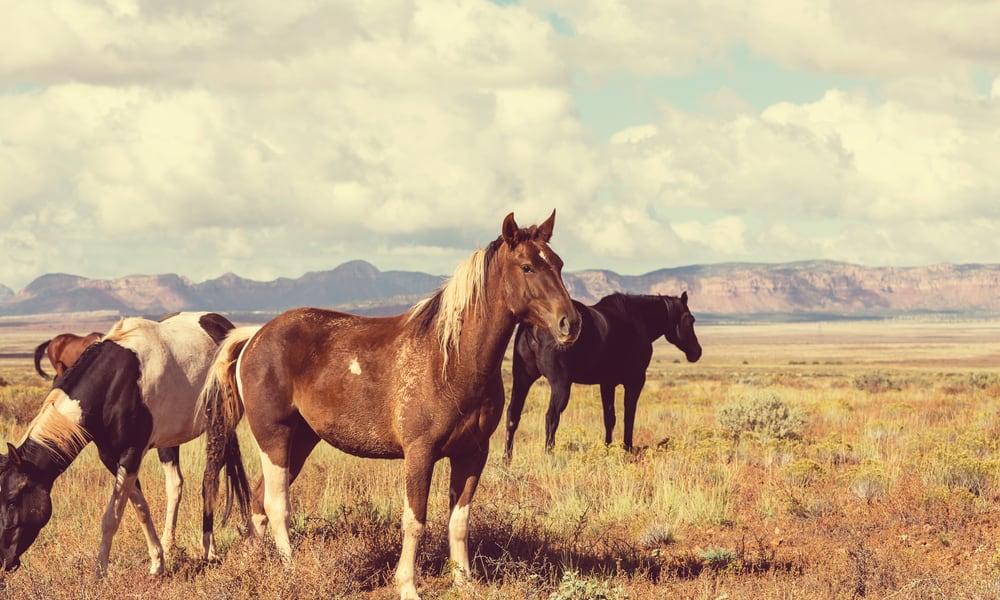
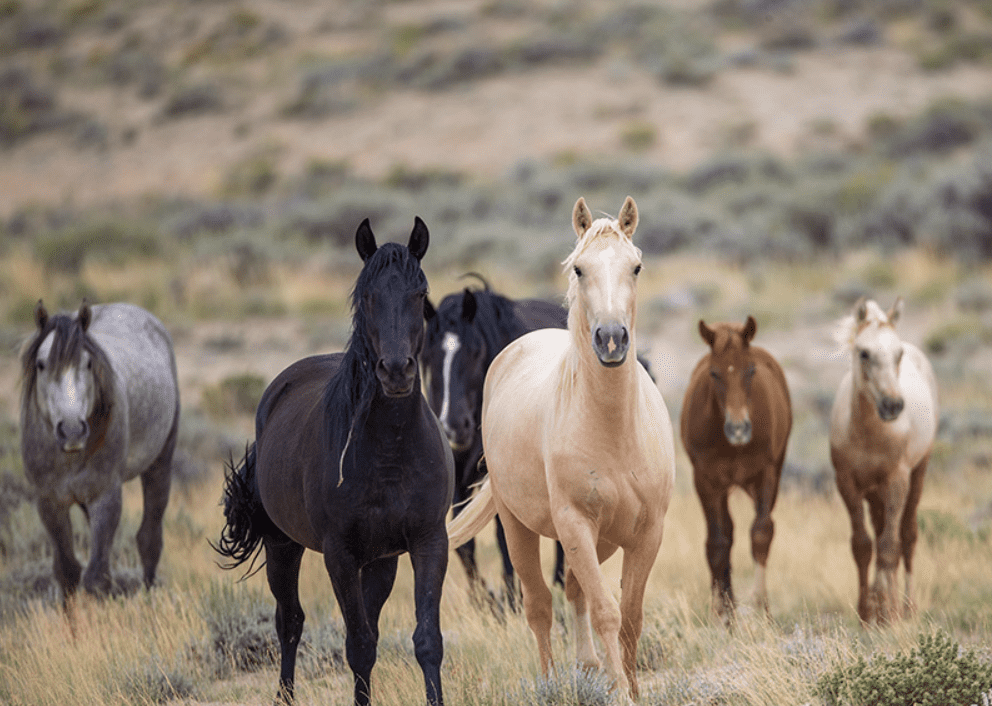
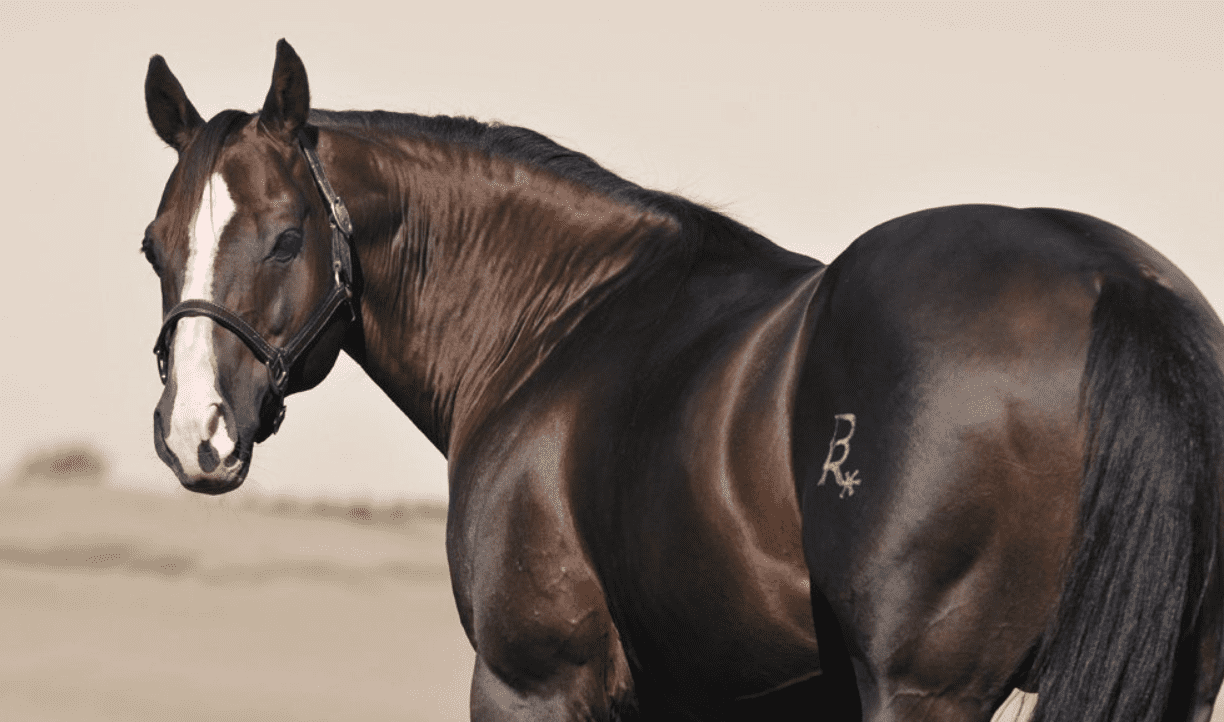
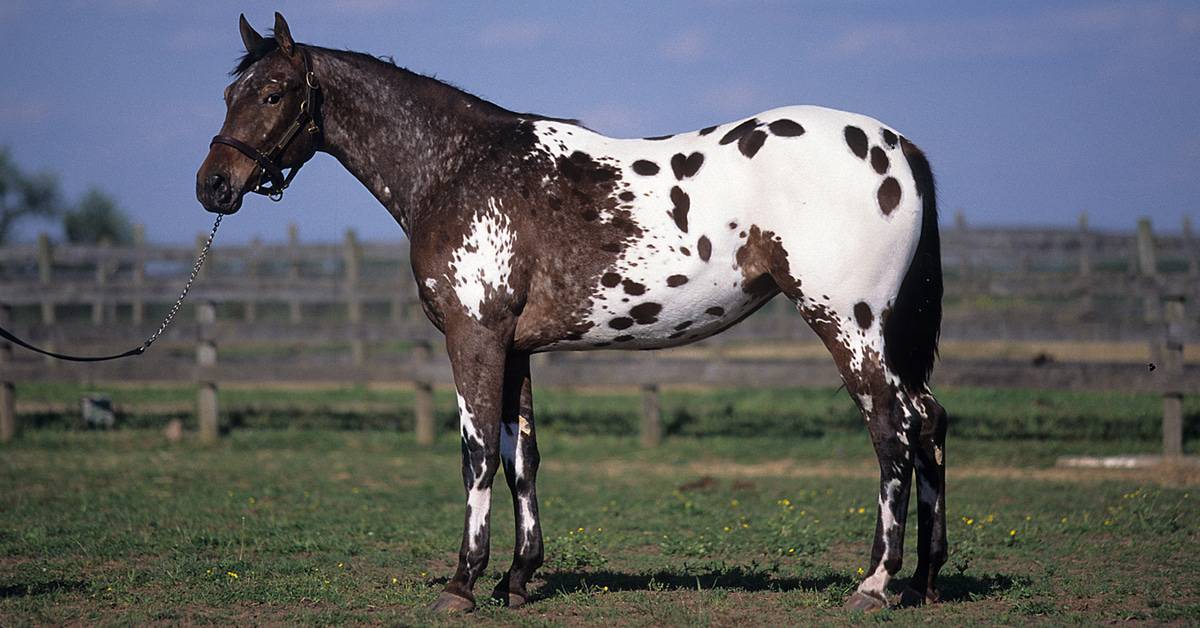
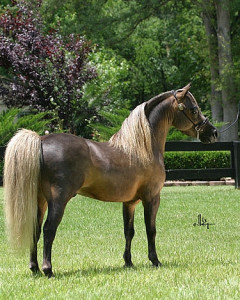
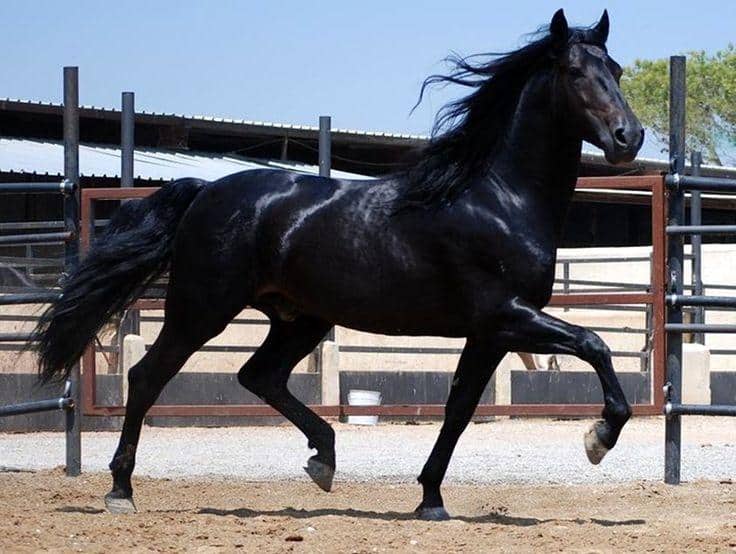
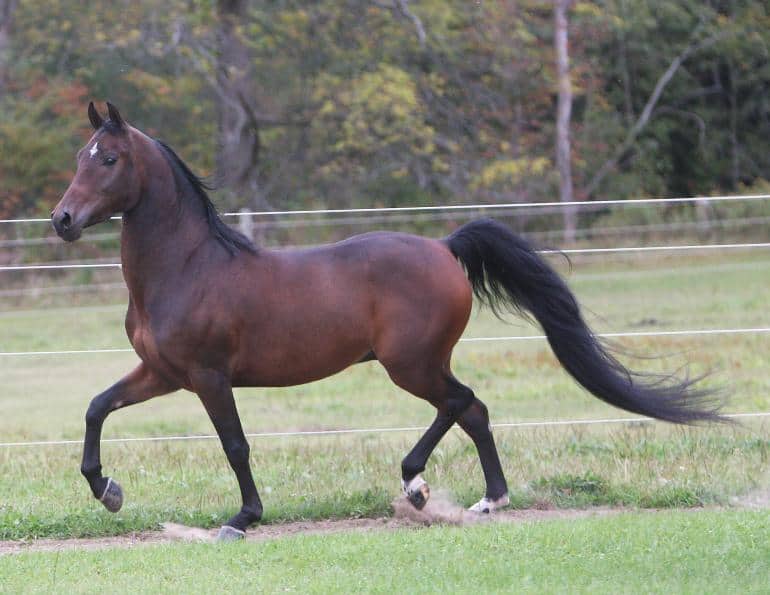
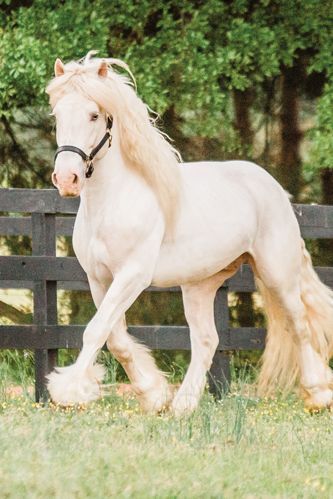
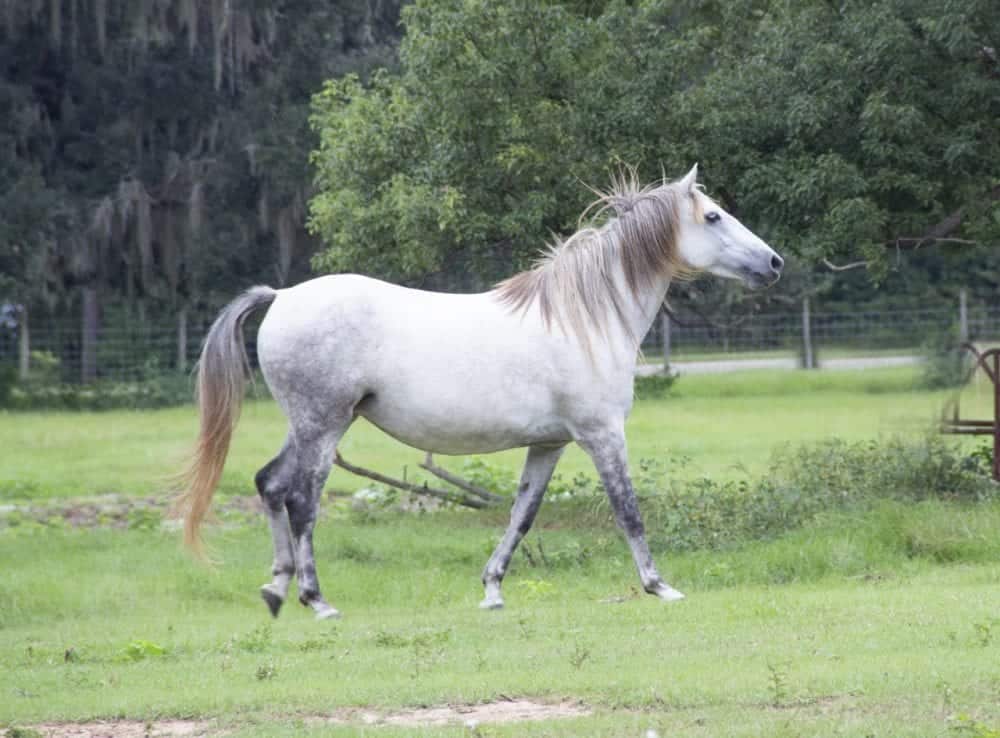
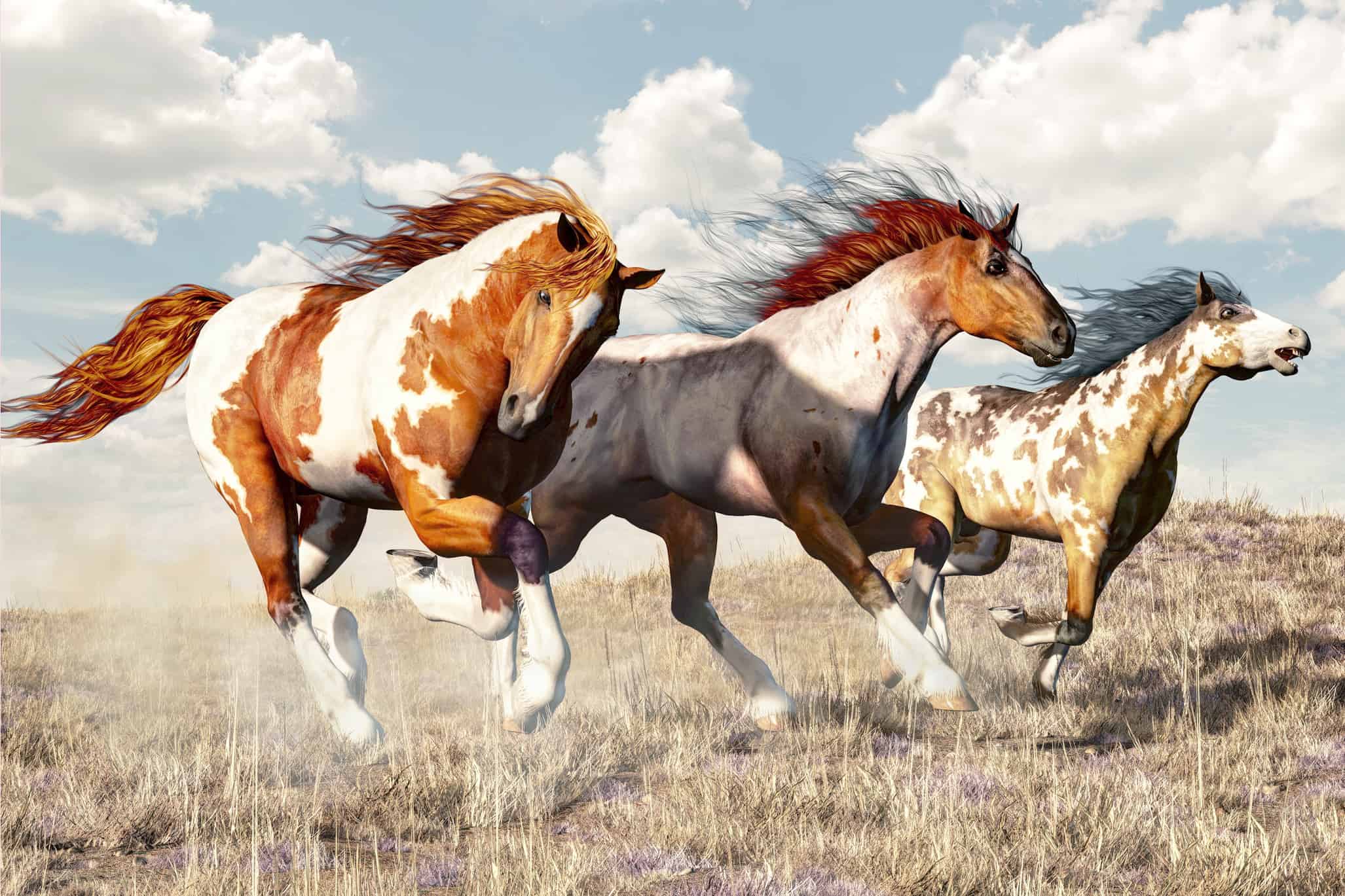
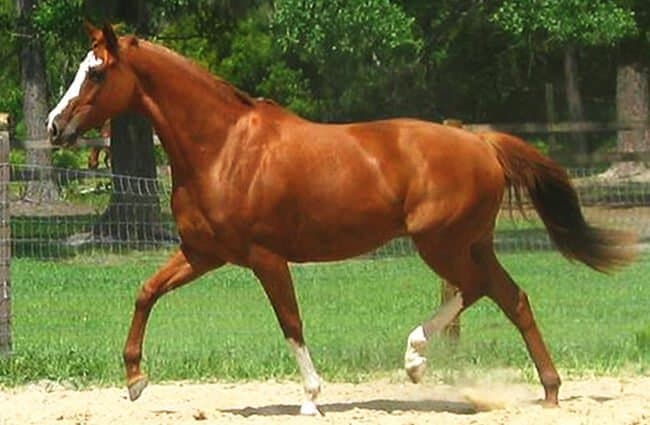
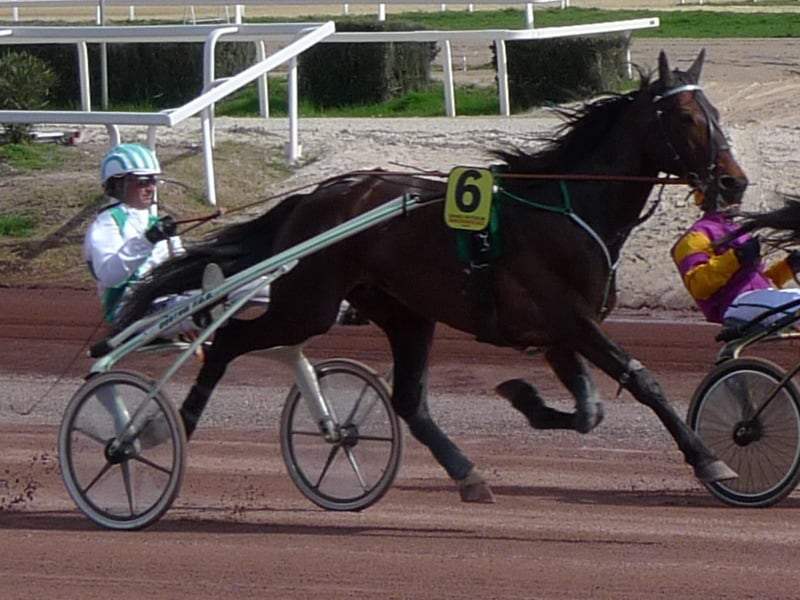
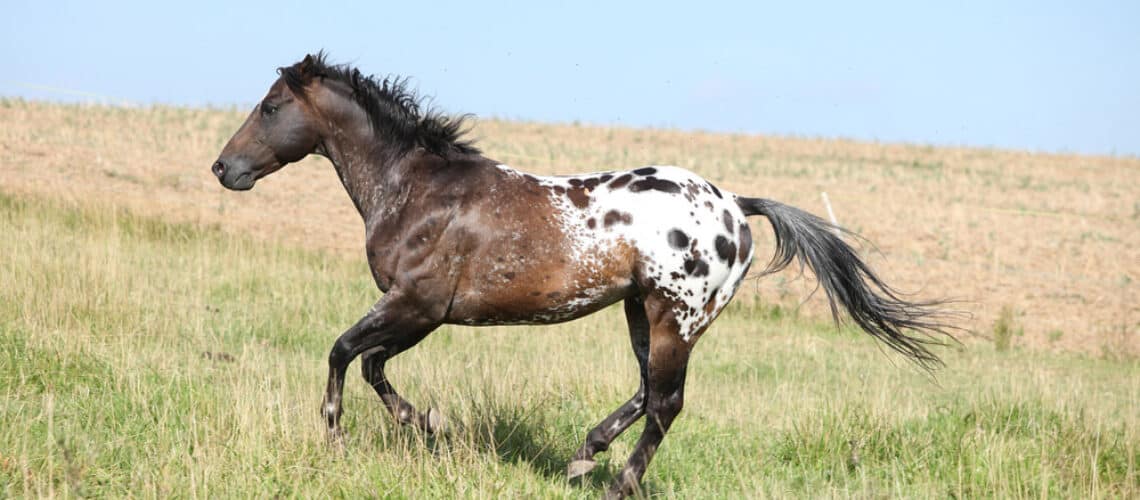
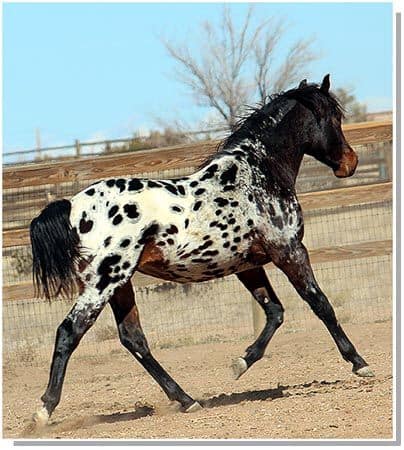
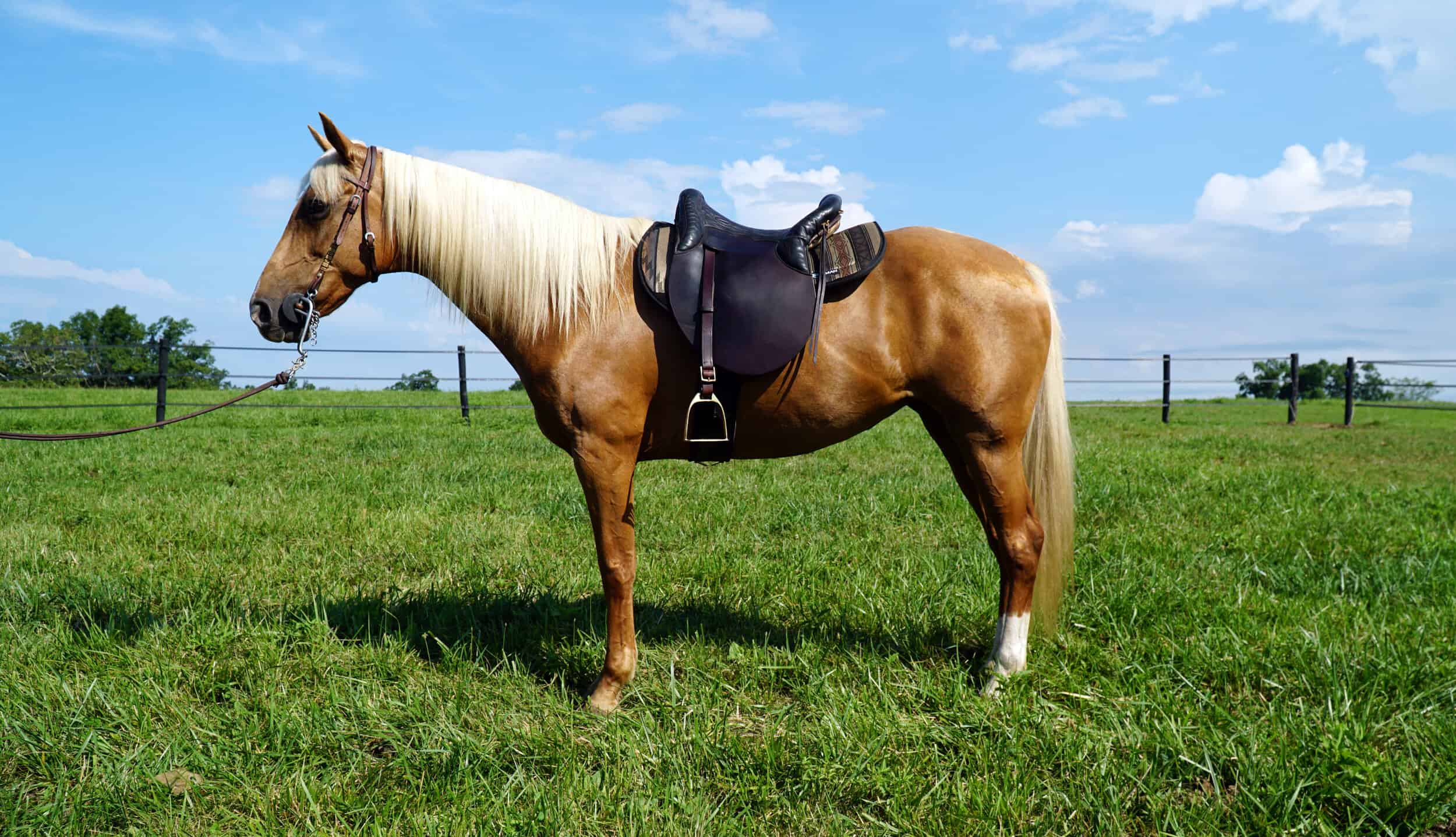
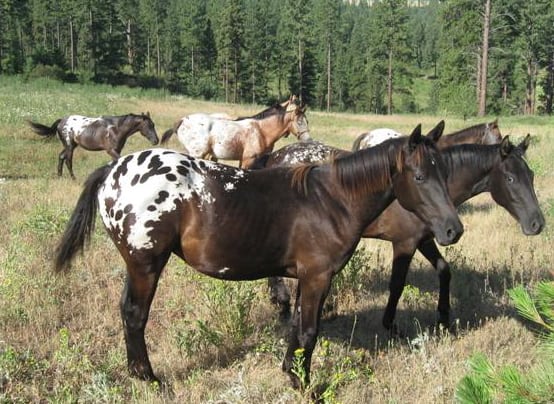
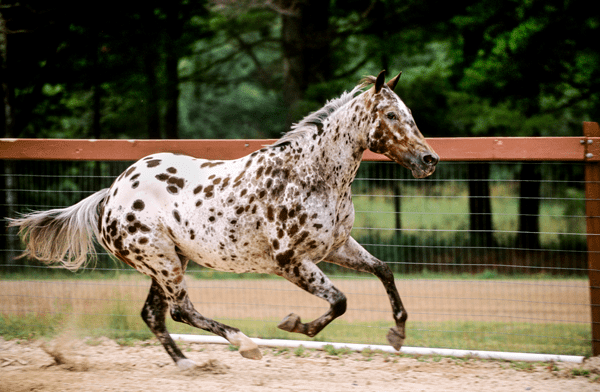
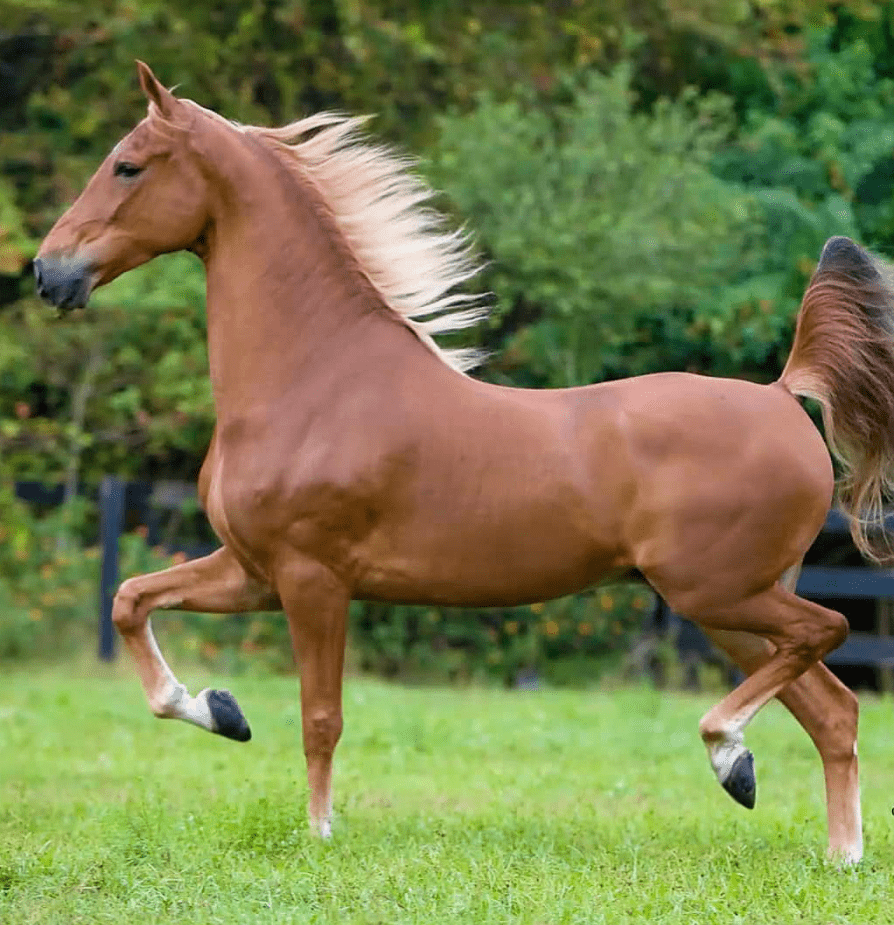
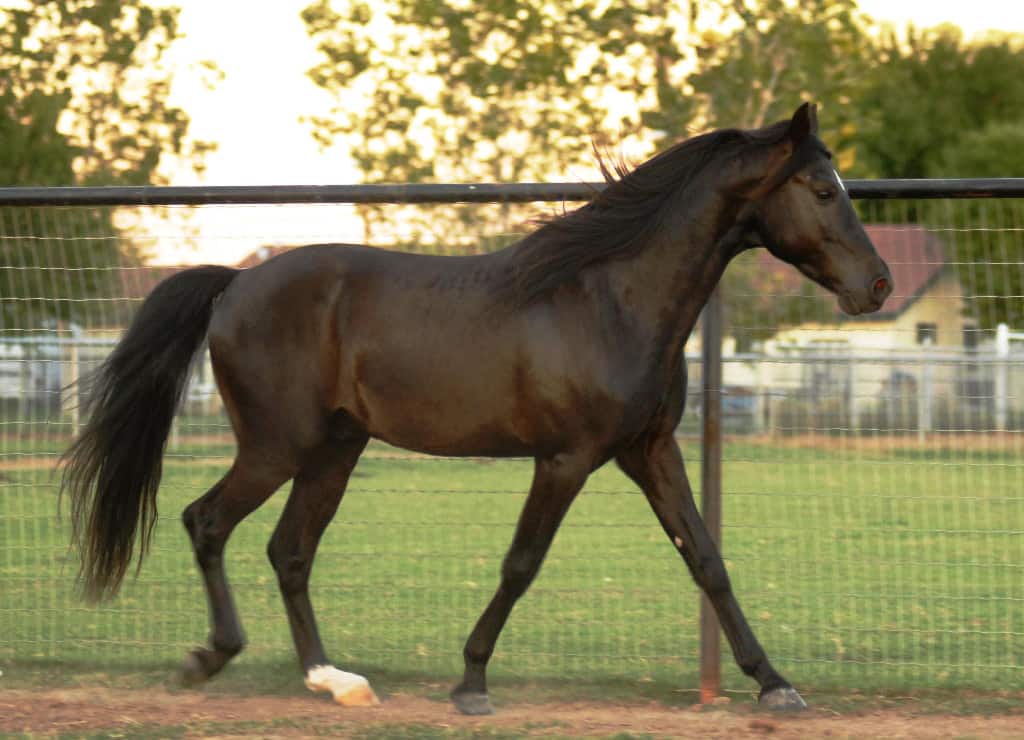
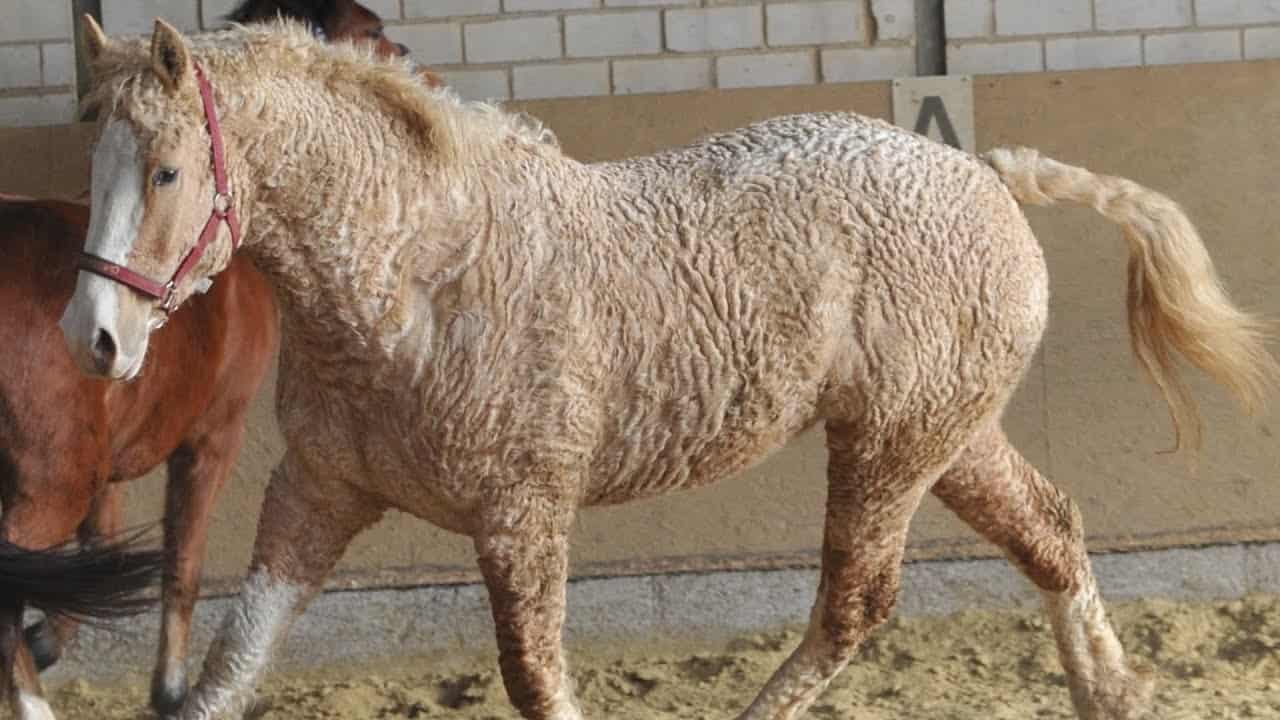
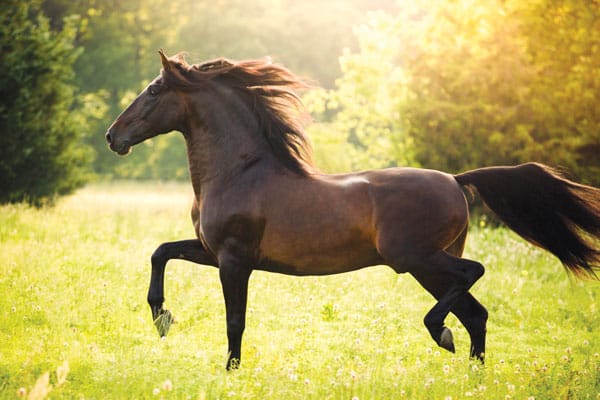
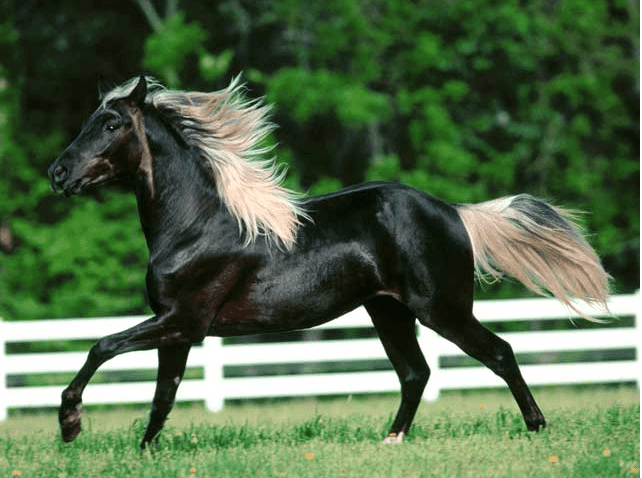
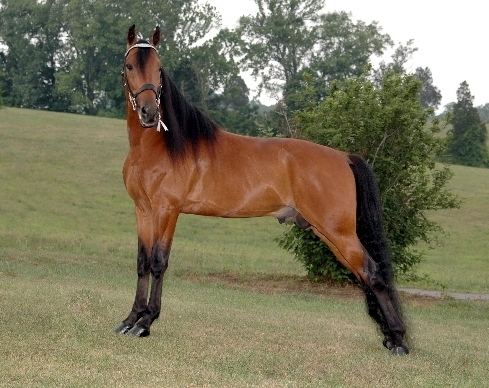
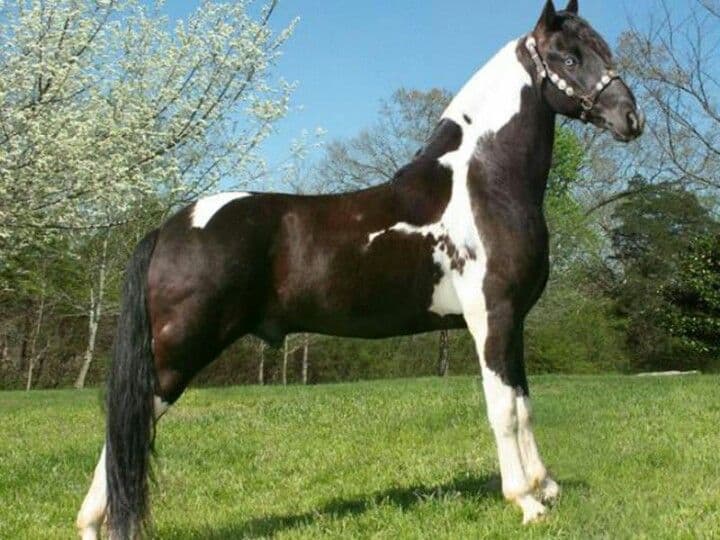
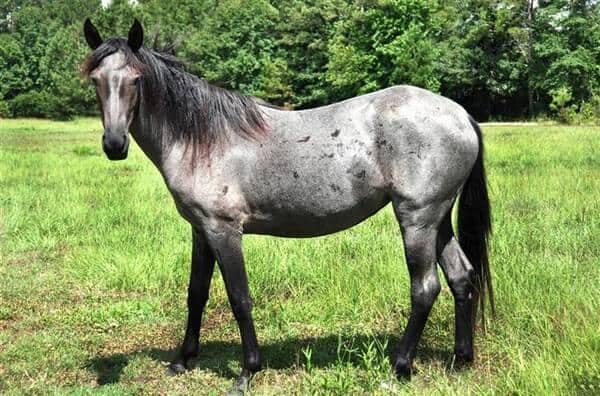
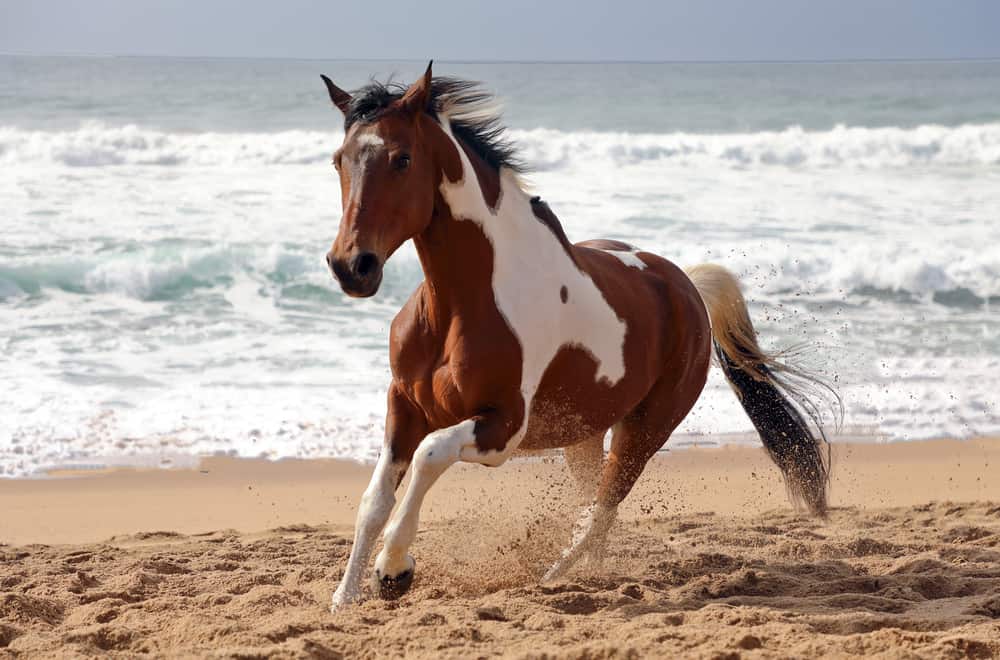
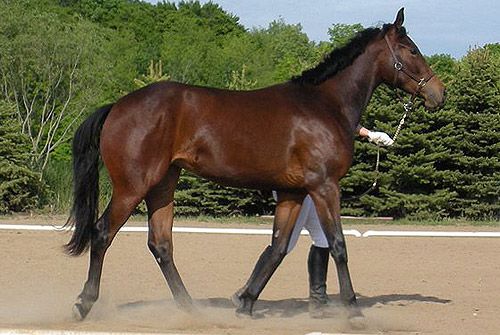
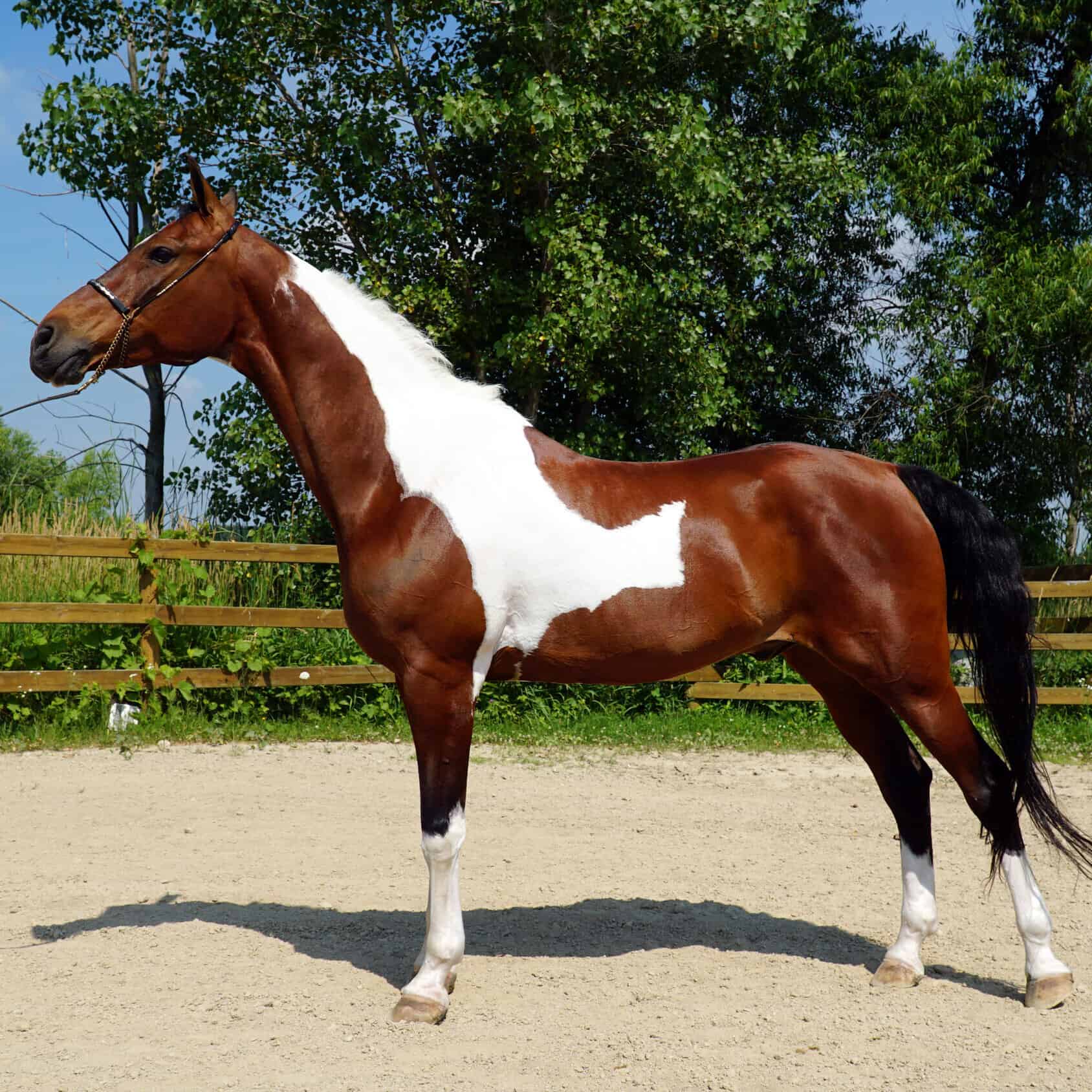
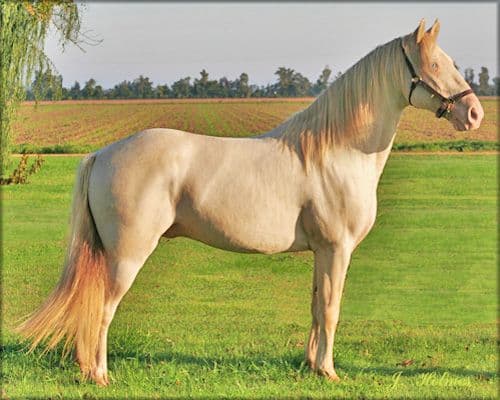
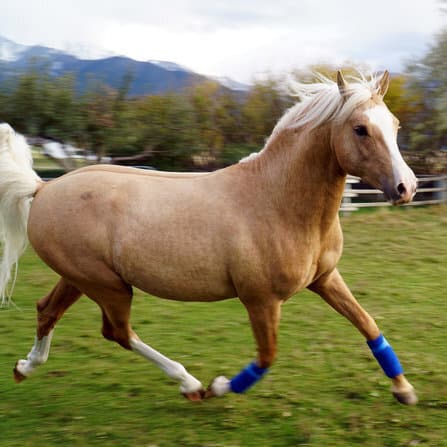
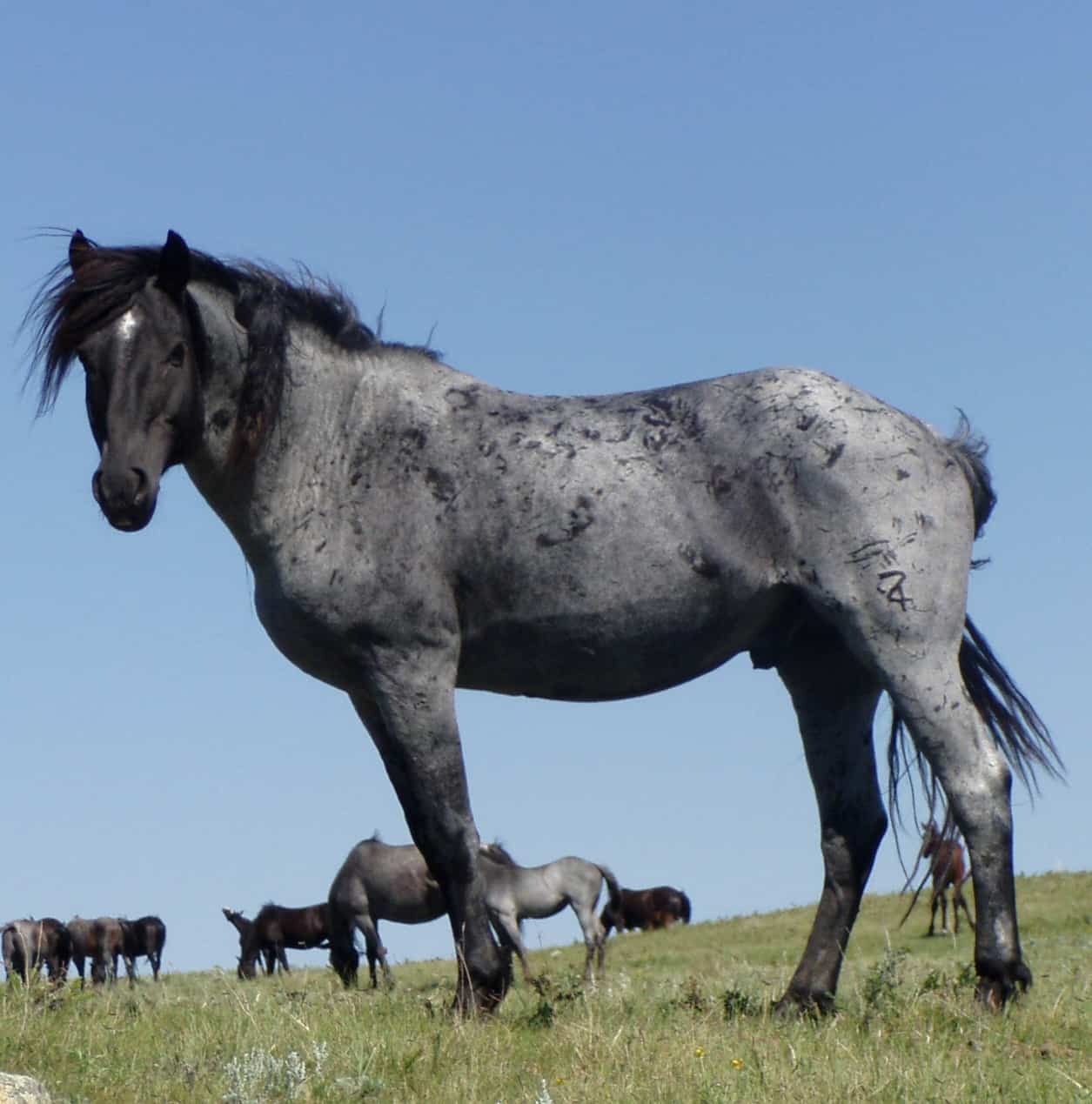
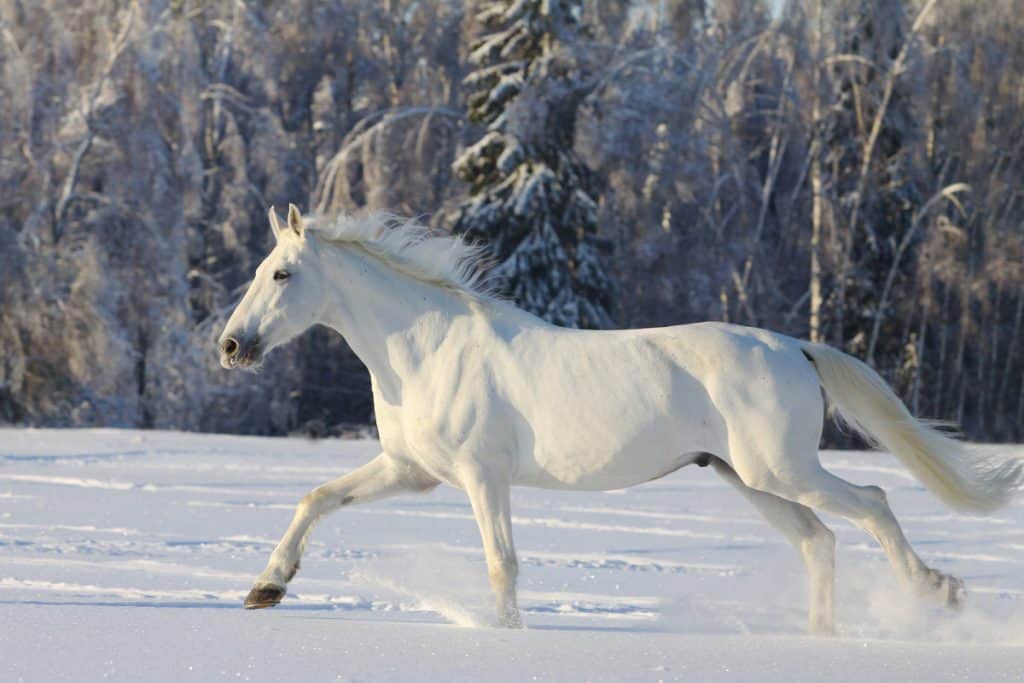
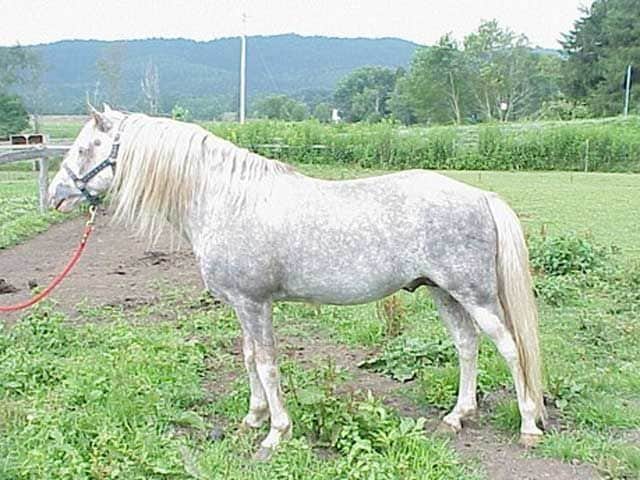
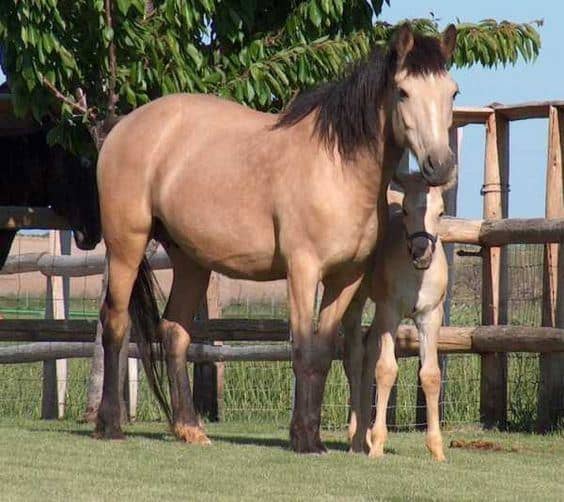
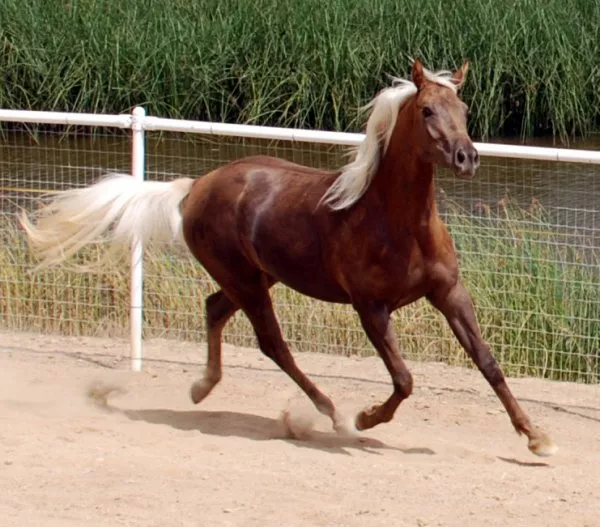
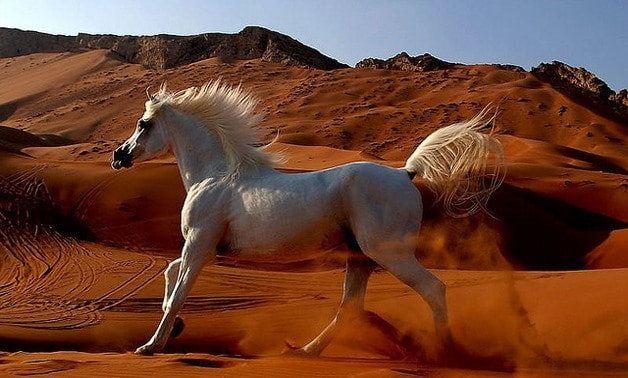
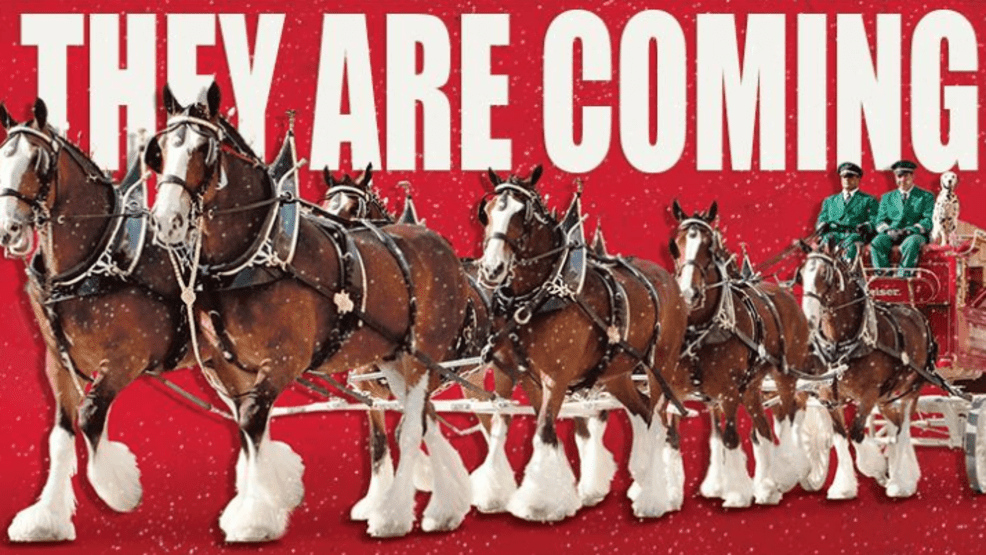
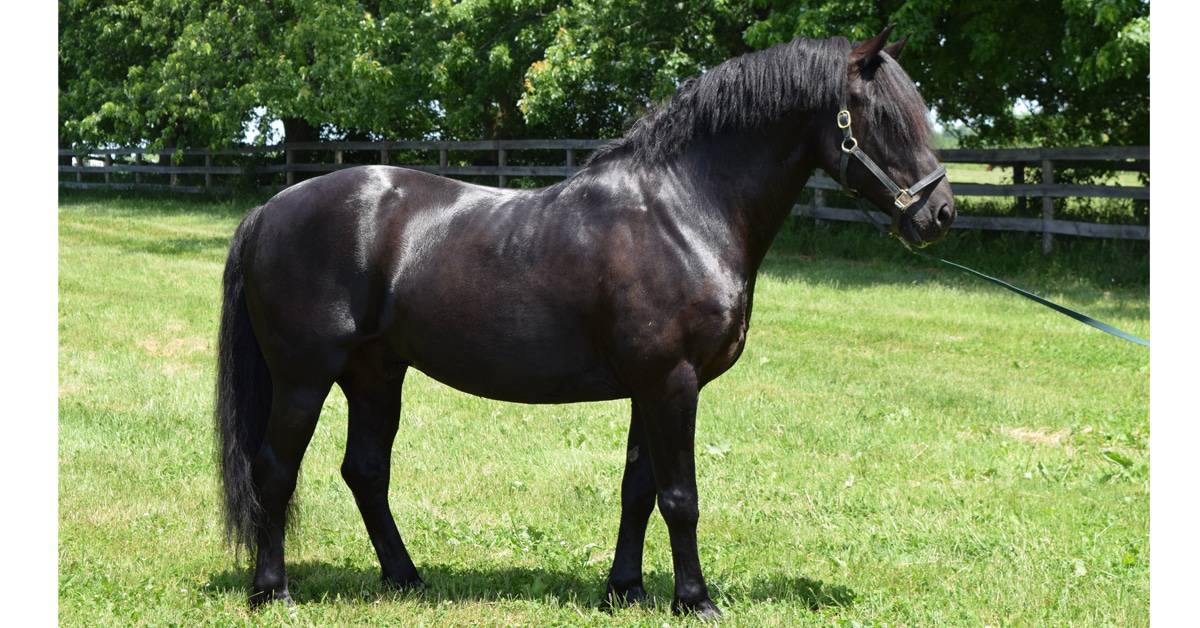
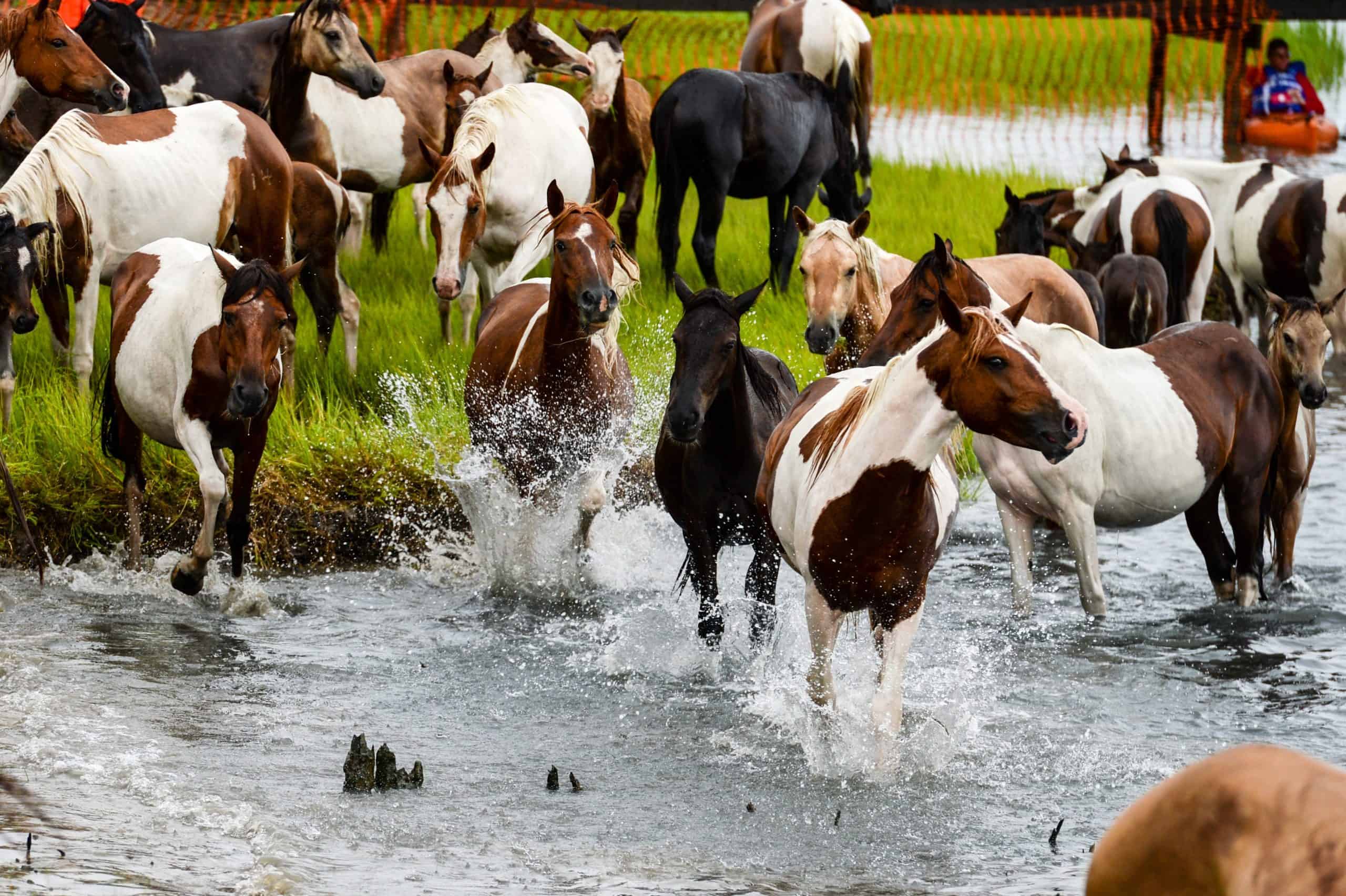
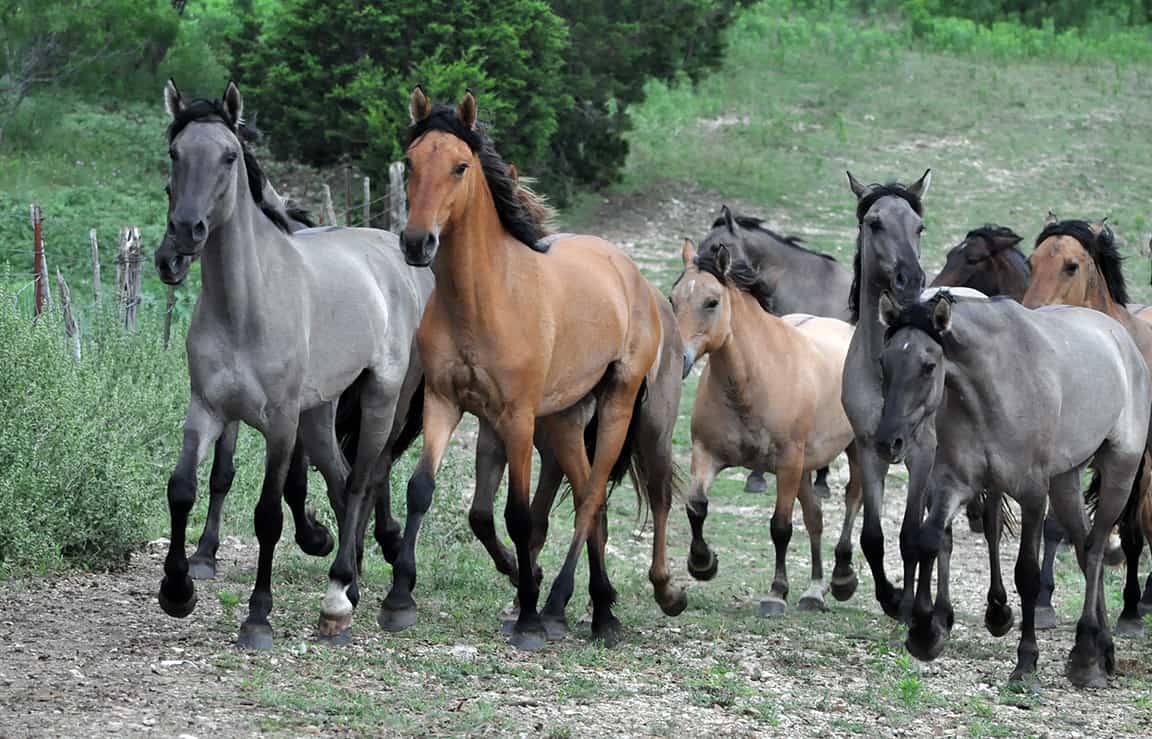
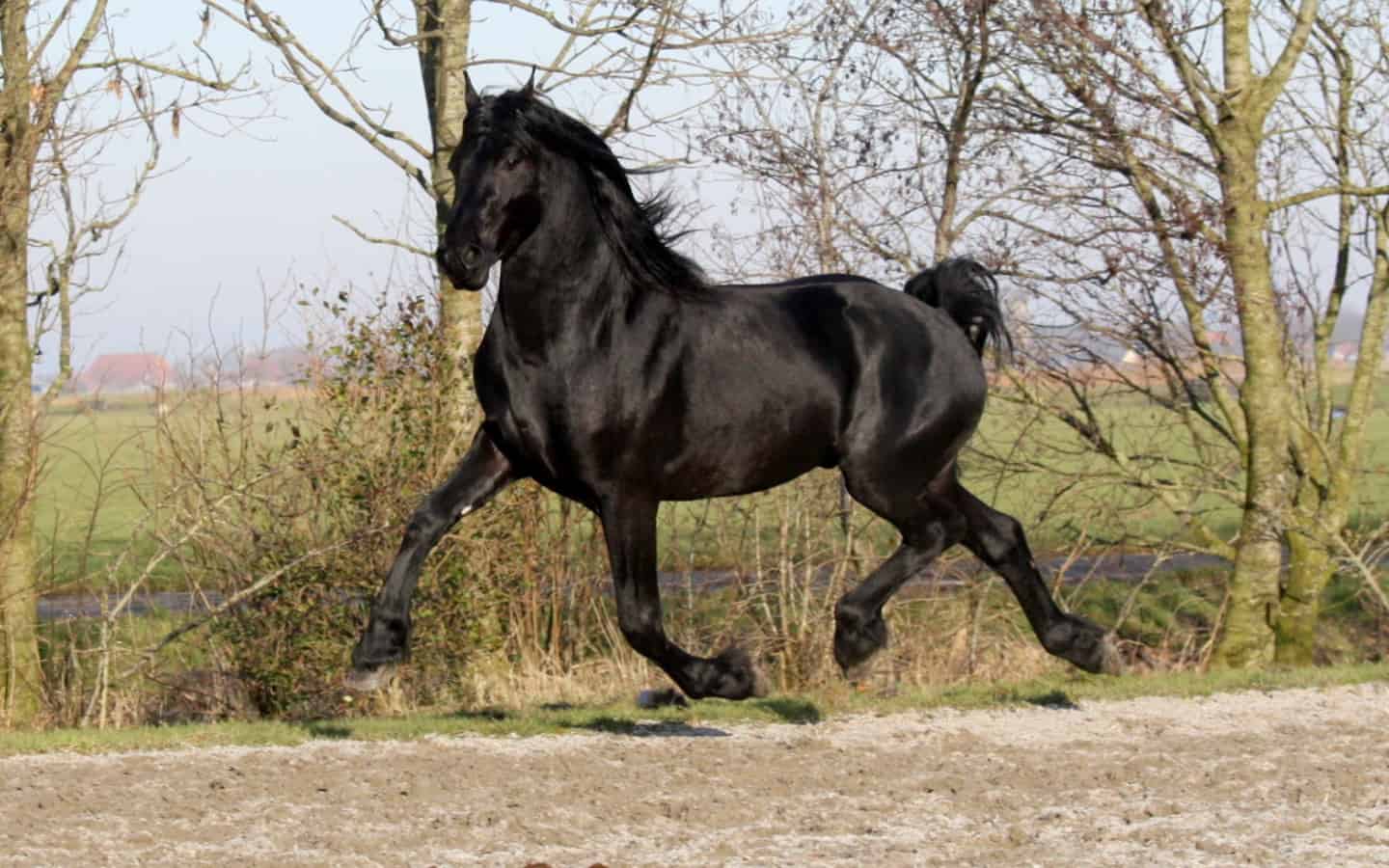
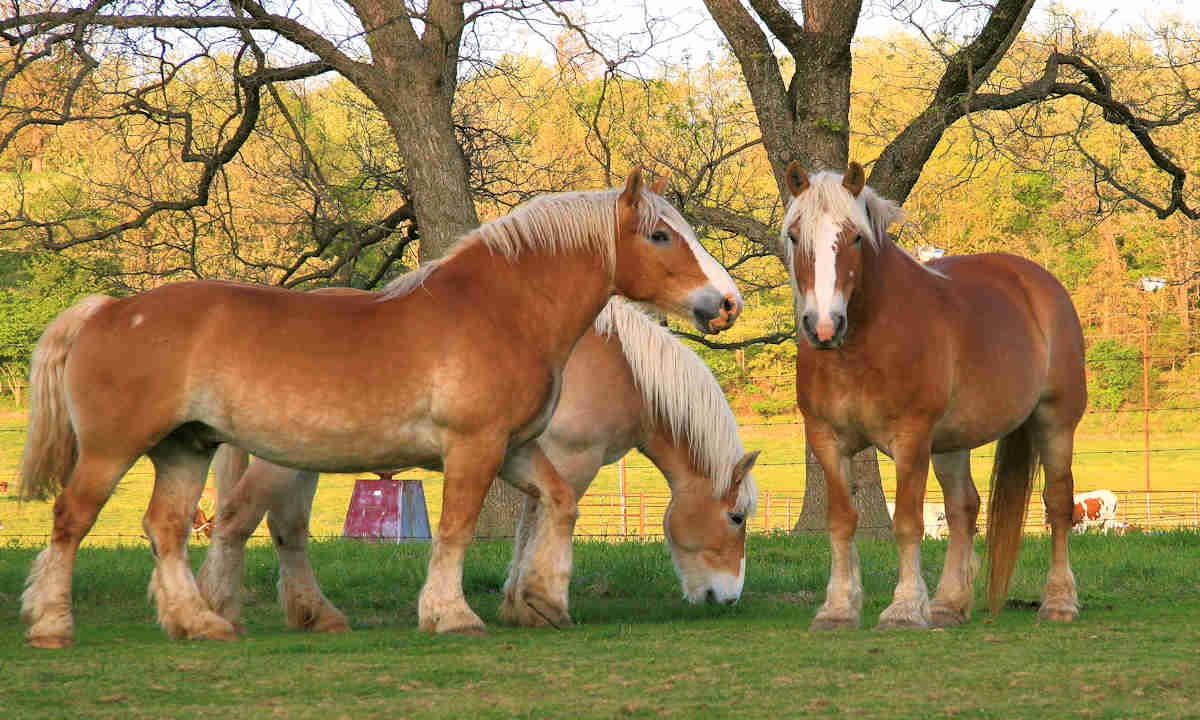








There are a few breeds that aren’t from America and it really frustrates me. The Belgian Draft Horse is a Belgian breed, a Thoroughbred is an English breed, an Andalusian is Spanish an a Friesian Cross isn’t fully American. Please check your list.
Well, the title states Horse Breeds IN the USA; meaning, horses that are found in the US. That being said, I take issue with several sections.
Tiger Horse: “Visually, this horse is the opposite of a Colorado Ranger (solid body, spotted rump) because it has a solid head and a spotted body.” This made no sense at all, anywhere, at any time. There is no horse that has a solid body and spotted head.
Tennessee Walker: why not have a photo of horse performing the running walk instead of trotting? Additionally, these are very popular as pleasure horses, not just for show. And ‘TWN’ in Mustangs – what is that?! Never heard that claimed anywhere else before. And by the way, TWH is the accepted abbreviation for Walkers, not TWN.
Missouri Foxtrotter: the registry was organized in 1948, not 2004. They are
“largely solid or pinto” – actually they always are, except for a rare roan.
Spotted Saddle Horse: “speckled” – do we mean spotted? let’s use correct terminology.
Quarabs: Where do I start. ‘Straight” = 50-50 parent breeds. “Stock” = heavier stock horse breeding; “Pleasure” = more refined Arab breeding. ‘and barrels are enhanced”, what does this mean?! A photo of a pinto horse is shown, yet your writeup states No spots; which makes no sense. And actually, YES pinto spotting is allowed by the Quarab registry.
Rocky Mtn. Horse: they are seen in chestnut and bay as well as the flaxen chocolate.
American Warmblood: very simplified, vague general comments, like for a kids book. Why bother?
Nice try, but this needs better fact-checking and better editing. It feels like someone with just a smattering of knowledge wrote it after skimming through some research.